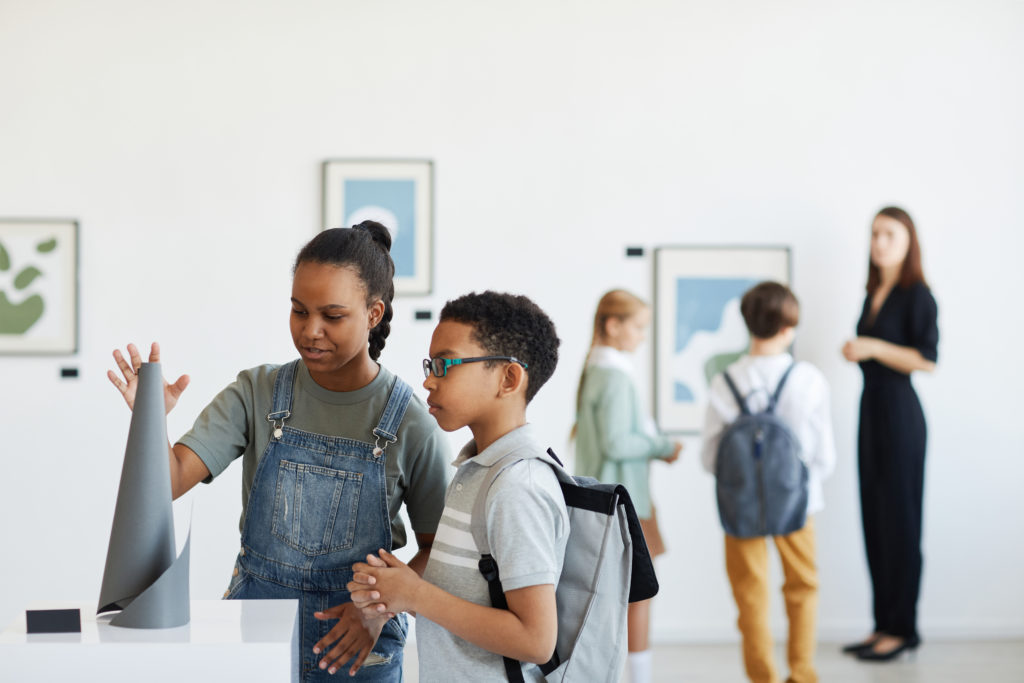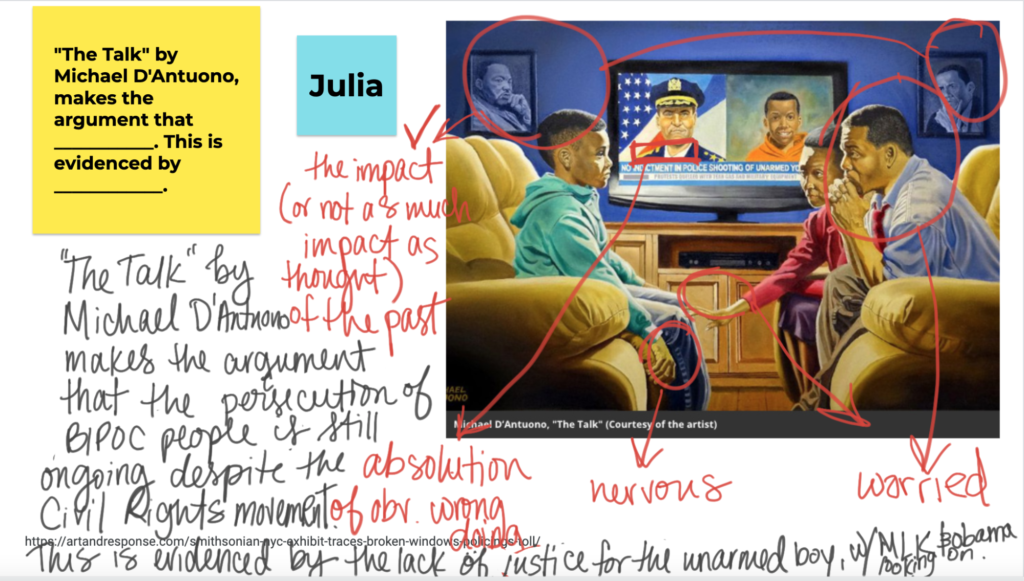Literacy in Visual Art Education: Art as Text

Literacy as it relates to reading and writing has been a passion of mine since I was an elementary art teacher early in my career. In my current role as a visual art supervisor for Prince George’s County Public Schools (PGCPS) in Maryland, literacy is a focus in every content area. In visual art, we view our artwork as texts and read or analyze them using our visual art vocabulary and visual thinking/literacy strategies. Using art in a “text-free” environment helps early readers develop decoding and comprehension skills, while also developing their reading abilities.
In addition to my role at PGCPS, I teach an online, semester-long course called Developing Critical Literacies for the Maryland Institute College of Art (MICA), as part of their Master of Arts in Teaching program. The purpose of this course is to expose art education students to literacy-based strategies and standards which they will be required to infuse into their daily art instruction when they become art educators. On day one of the course, the expectation is set that all educators, regardless of the content they teach, are responsible for teaching literacy and that this instruction is a daily occurrence. Typically, this course, which is required for certification in Maryland, is filled with educators from various content areas and levels. At MICA, this course is unique in that all the students are visual art education majors.
Throughout the MICA course, the soon-to-be educators build a literacy toolkit of strategies they will use in the classroom. They participate in these strategies through various warmups, research and activities woven throughout the semester. I start by engaging the students in a series of Artful Thinking Strategies and Visible Thinking Strategies created by Harvard Project Zero. The following example was adapted from the Core Thinking Routine, Claim, Support, Question. Using a Google Jamboard, each student received a slide with an image by artist Michael D’Antuono to write on or annotate. In the top left corner was a digital sticky note that said, “‘The Talk‘ by Michael D’Antuono makes the argument that _____. This is evidenced by _____.” The students used the digital tools to mark up the work of art, highlighting any key ideas and details. Once they had thoroughly read the artwork, I asked them to complete the prompt. Next, they participated in a “gallery walk” by viewing the slides completed by other students. Finally, we synthesized our learning and key points through a whole group discussion. The image below is an example of one student’s work.

With permission from the artist Michael D’Antuono and art teacher candidate Julia Brennan.
The Maryland State Department of Education sets the expectation and emphasizes the importance that literacy instruction is woven throughout all content areas, including the arts. It is no longer solely the reading educators’ responsibility for making sure students have strong literacy capacities in reading and writing when they graduate. Through courses and programs similar to those at MICA, future educators learn skills to support students in demonstrating independence as readers, building strong content knowledge and critiquing and valuing evidence. These are some of the capacities we need our students to graduate knowing. If instruction in every content area provided a specialized version of this required course, deeper learning in literacy would be more authentic and attainable.
This post is part of AEP’s Continuing the Arts and Literacies Conversations blog post series. These posts expand on key ideas and topics from our Arts and Literacies Thinkers Meeting Series and from the resulting interactive resource. Through sharing their personal reflections and work experiences, guest authors explore a range of topics that span disciplines, age levels and education environments.



